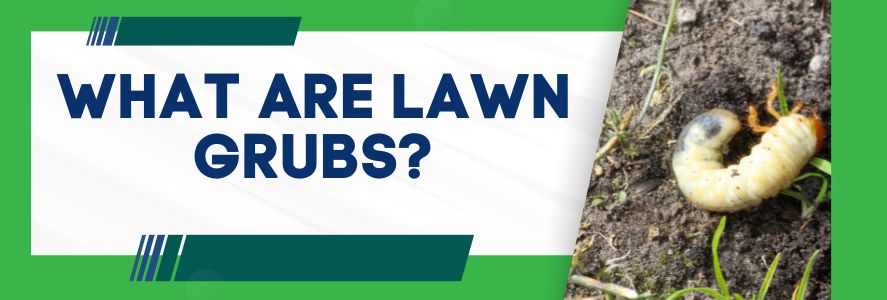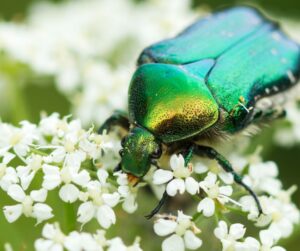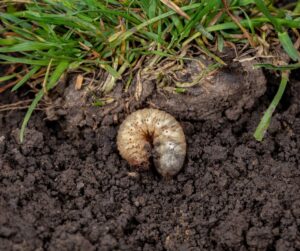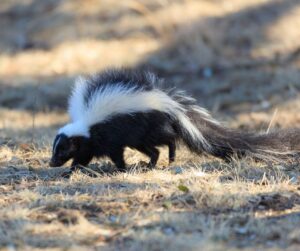
Lawn grubs are the crescent-shaped, white to cream colored larvae of multiple different types of scarab beetles, with soft bodies, brown heads and three short pairs of legs. These larvae are buried deep within the ground, where they can kill your lawn by feeding on the roots of your grass.
If you start to notice large, brown spots of dead grass in your yard in the spring, this could be a sign of white lawn grubs buried deep within your soil. A grub-infested lawn will often look drought-stricken, feel spongy, and can be pulled up easily. Wildlife like raccoons and skunks are attracted to the grubs, and will tear up your lawn to feast on them.
White lawn grubs can be eliminated with a pest control program by a licensed professional like Summit Environmental Solutions, and the animals that feed on them can be trapped and removed.
Scarab Beetles

Scarab beetles feed on a variety of different things. Some scarab beetles will feed on dung, while others will feed on dried carcasses, fungus and dead leaves inside soil. Scarab beetles will also feed on dead or rotting wood, and some are garden pests, feeding on plants and leaves. Adult scarab beetles like the Japanese beetle are known to feed on some garden plants and leaves, but the biggest danger that Scarab beetles pose is the damage their larvae can cause when they feed on the roots of grass.
Lawn Grub Damage

Lawn grubs will often allow sections of a lawn to be pulled up entirely, like sod, where you can see the grubs dwelling within the soil. Another danger that lawn grubs pose is they can attract nuisance wildlife like skunks, raccoons, moles and voles.
Skunks, Raccoons, Moles and Voles

Raccoons are in a similar situation, they are also scavenging omnivores that will eat whatever they can find, so they will use their large claws to rip up your lawn to find the grubs underneath. If skunks and raccoons are finding grubs on your property, then they are more likely to regard your home as a source of food, and they will look for shelter nearby. Attics and crawl spaces can often provide this shelter for raccoons, and underneath decks, porches and sheds can provide this shelter for skunks.
Moles and voles are both small, burrowing rodents, and both animals will eat white lawn grubs. Moles and voles are more likely to stop and settle down in a yard with abundant food sources, so if the soil in your yard is full of white lawn grubs, then moles and voles are sure to follow. Evidence of moles in your yard is easily spotted, as these rodents will kick up lots of dirt as they dig, creating large volcano-shaped mounds of dirt called molehills.
Lawn Grub Pest Control
Lawn grubs are the whitish/cream colored larvae of Scarab beetles, a beetle family that includes bugs like the June bug and the European chafer. Lawn grubs can be identified by their color, signature crescent shape, and their brown heads with three small pairs of legs. While these grubs live underground and aren’t as obvious of an insect pest as something like ants, they can still cause extensive damage to your lawn. These grubs will feed on the roots of your grass, killing it and creating brown spots across your yard. Worse yet, these grubs can attract wildlife like skunks, raccoons, moles and voles that will dig up your lawn to find grubs to eat.
Lawn grubs can turn your lush, green yard into a patchy mess covered with molehills and burrows quicker than you think. Pest control solutions can help eliminate the grub population in your yard, keeping your grass safe. A professional pest control treatment by a company like Summit Environmental Solutions can offer a longer lasting and more efficient grub treatment than something you might find in a store. Summit Wildlife Removal can also trap and remove any skunks or raccoons digging for moles on your property. If you have lawn grubs on your property, contact Summit Environmental Solutions for pest control at 703-520-5868 or fill out a contact form.




